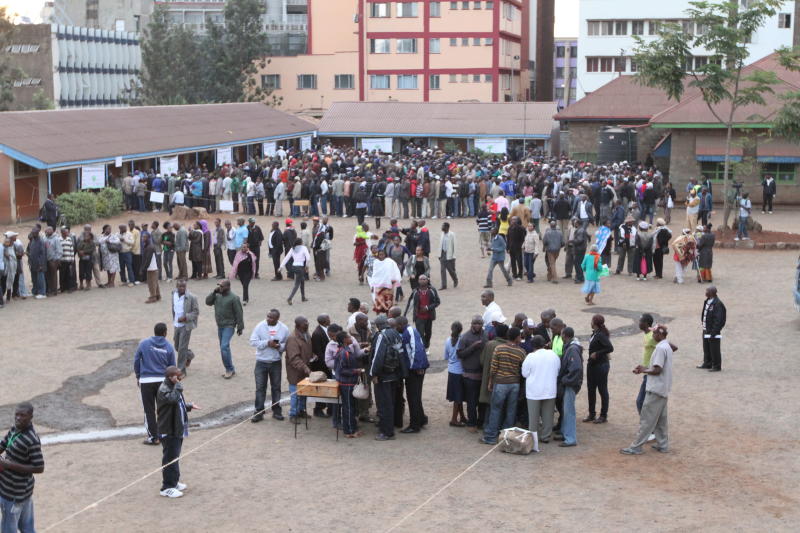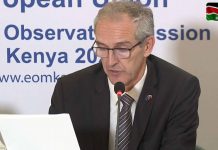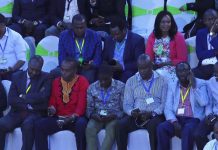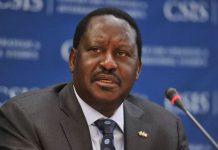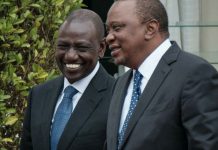The release of the population data has ignited the debate about political numbers two years before the General Election.
With ethnic affiliations being one of the most important considerations in campaigns for the presidency, leaders eyeing State House will fight hard to retain the vote-rich Mt Kenya votes.
The africa-press has crunched the numbers, which not only reveal a rich hunting ground for votes in Central Kenya, but also the constituency that has an extra-ordinary zeal that saw them register to the man in the past elections.The data also shows that Western region is a sleeping giant, with a lot of eligible voters who unfortunately have not registered and have had a poor turnout at the ballot.
Deputy President William Ruto, with whom President Kenyatta won their way to power in 2013 and 2017, has been making forays in Mt Kenya and Western regions. Yesterday, the DP was in Laikipia and Tharaka Nithi counties for fundraisers.
Others who could be in the race include former Prime Minister Raila Odinga.According to Wahome Thuku, a lawyer, after the release of the census report, the debate is now all about the tyranny of numbers at the ballot, with the report seen as a blueprint on how votes should determine the election outcome.
“Even those doubting and vowing to challenge the results are only speaking from the fears that the numbers will have their strongholds scrapped, rendering them redundant,” Thuku said.Those extra figures, he says, do not seem to matter for now despite being crucial. Probably, the most critical number out of the 47.5 million is that of those aged 18 and above — the voting mass.
Highest share
Mt Kenya region had the highest share of people older than 18 years that registered as voters, with Nyeri and Nyandarua leading.Nearly everyone who was eligible to vote in Nyeri had a date with the Independent Electoral and Boundaries Commission (IEBC), with the fraction of registered voters in the county standing at 94 per cent. About 457,000 people in Nyeri registered.Nyandarua County was second, with 335,000 people registering to vote out of 360,000 that were eligible.The third was Samburu, 91 per cent, followed by Tharaka Nithi, where 213,154 people out of 234,005 registered to vote.
Murang’a comes fourth, followed by Siaya, Homa Bay and Lamu. They are followed by Kirinyaga and Kisumu.Even Ruto’s strongholds of Uasin Gishu, Trans Nzoia, Nandi, Elgeyo Marakwet, Kericho and Bomet cannot match the well-oiled voting machine that is the Mt Kenya region.
Mandera, Garissa, Turkana and Wajir had the least percentage of people that registered to vote.In the data, there were five tribes that were above four million people, thereby easily passing as the significant decision-makers in the country’s national politics. The talk has narrowed down to how the numbers will apply in the 2022 General Election.Nandi County had the highest registered voters in North Rift, with 346,000 people registering to vote out of 467,634 eligible.
Five communities have an immense power in their numbers to determine political and economic trajectories the country takes with a 30.8 million (65 per cent) of Kenya’s population. They include, Kikuyu 8.1 million, Luhya 6.8 million, Kalenjin 6.3 million, Luo 5 million and Kamba 4.6 million while 45 tribes make up 35 per cent of the population.Politicians are now adding, subtracting and balancing the numbers so that they can benefit from them in the 2022 political matrix.
Mt Kenya region tops the country in their turnout, with an average of 95 per cent in the last General Election.In 2017, Uhuru got 2.3 million votes in Kiambu, Nyeri, Kirinyaga, Nyandarua and Murang’a, with an average of 98 per cent victory. Western, the second most populous region, will be another area to watch in the next polls, though there is a debate on how majority of the votes can be in one basket.
According to the Ethnicity and Politicisation in Kenya by the Kenya Human Rights Commission (KHRC), ethnic identity is arguably the single most important variable in the Kenyan political arena.Political parties are commonly viewed as ethnic enclaves while elections are considered to be nothing more than a measure of the numerical strength of ethnic groups.“Ethnic identity defines why and how politicians seek, retain, or cede power,” reads the KHRC report.

